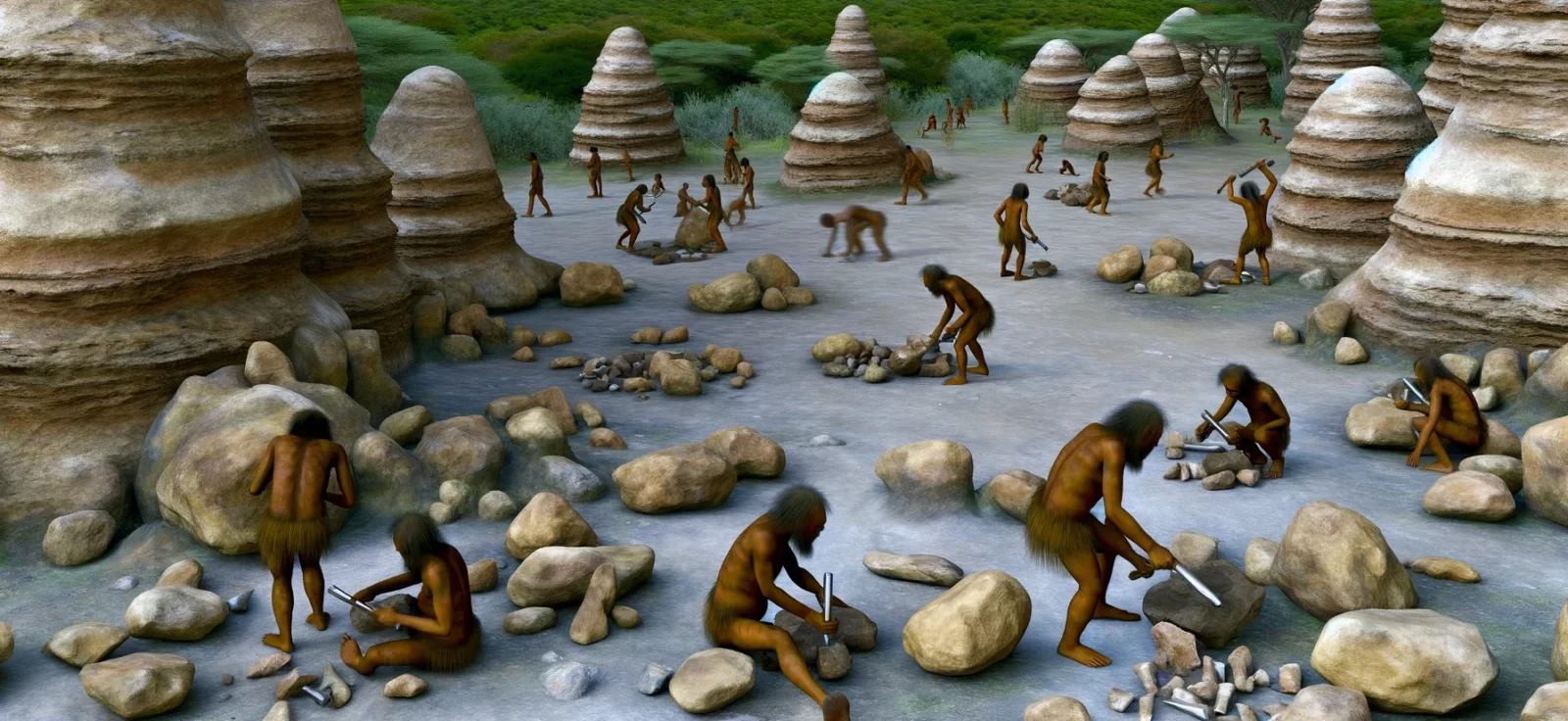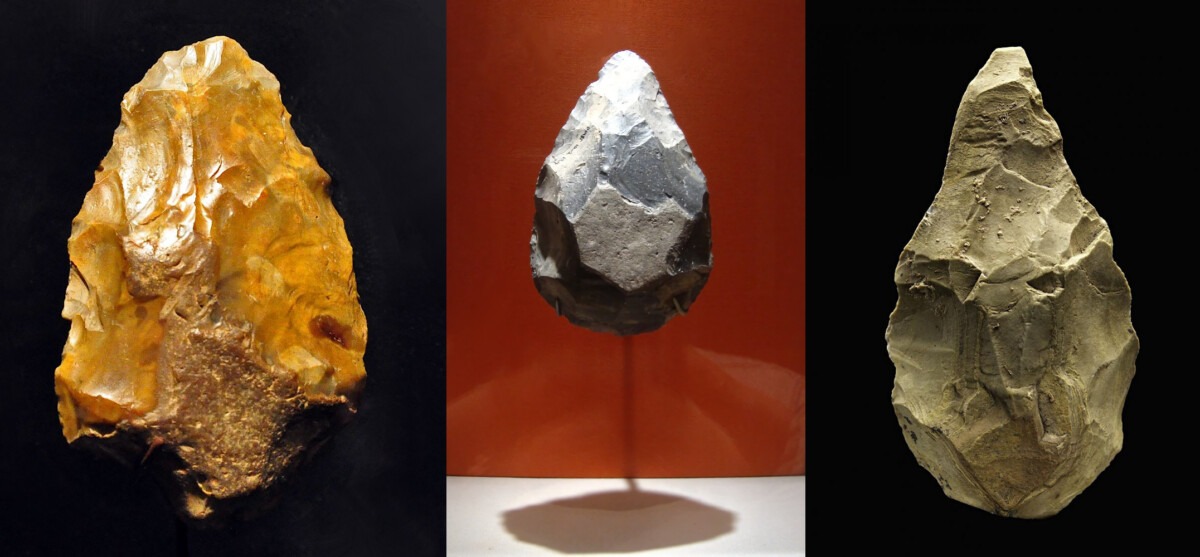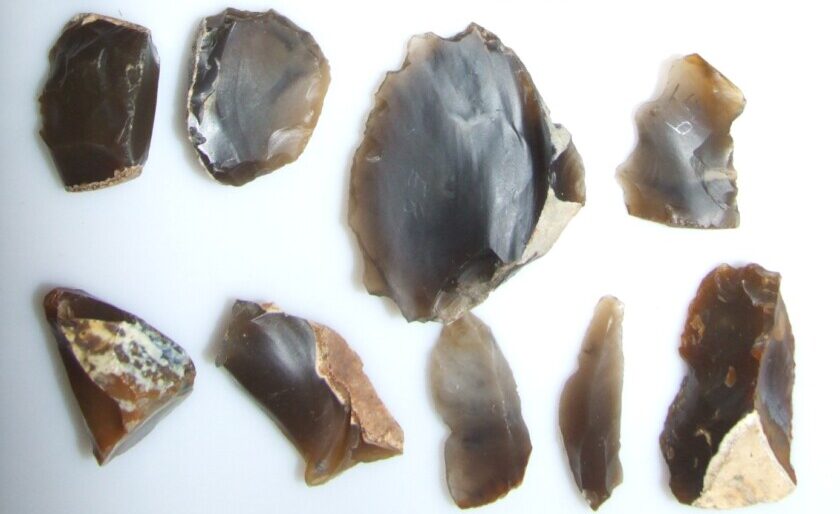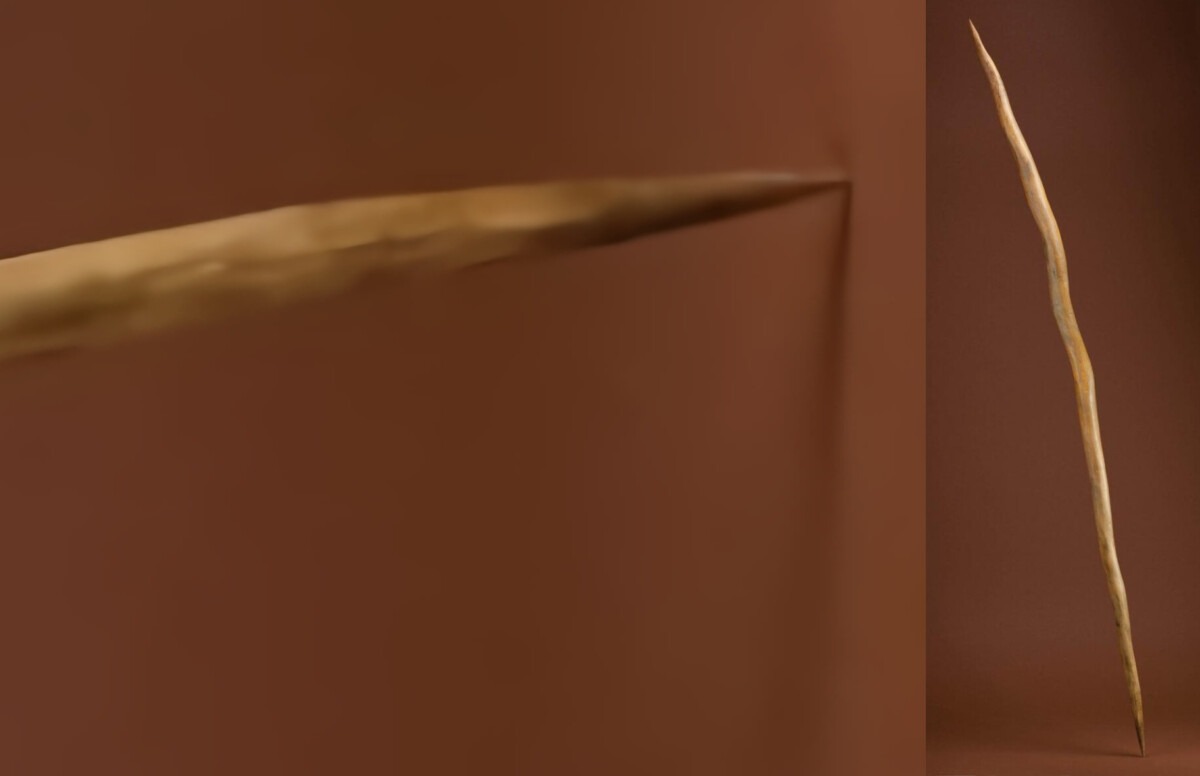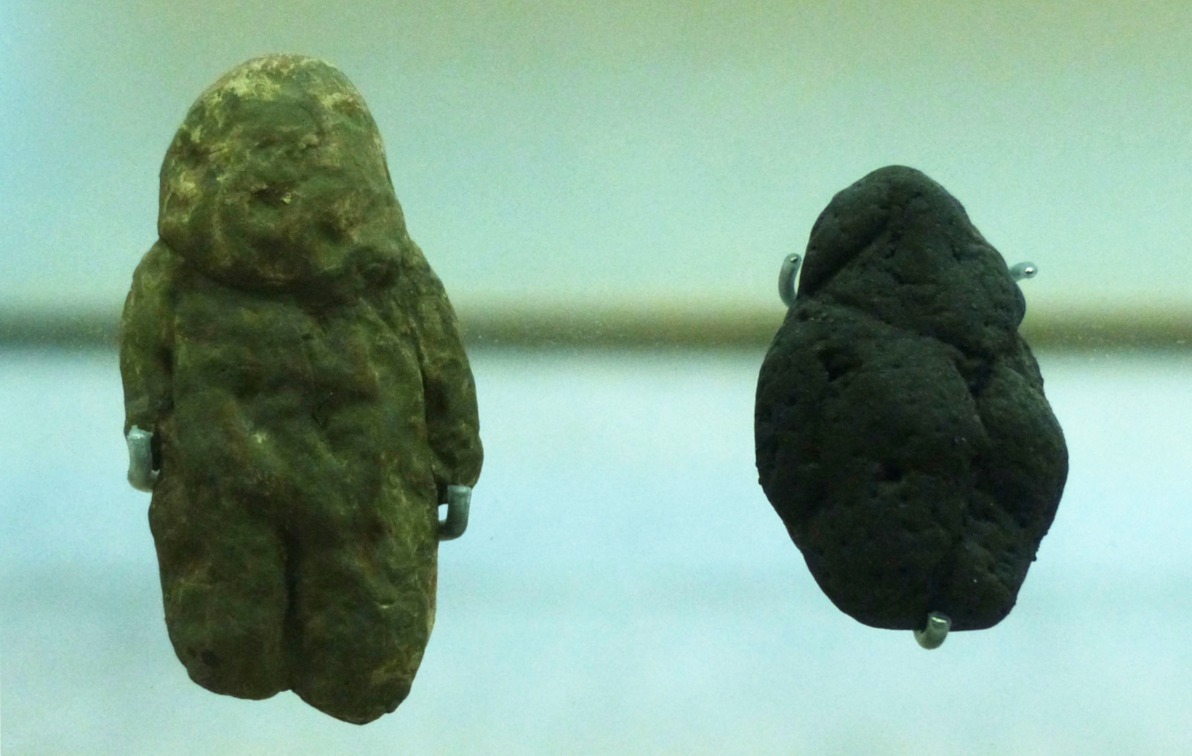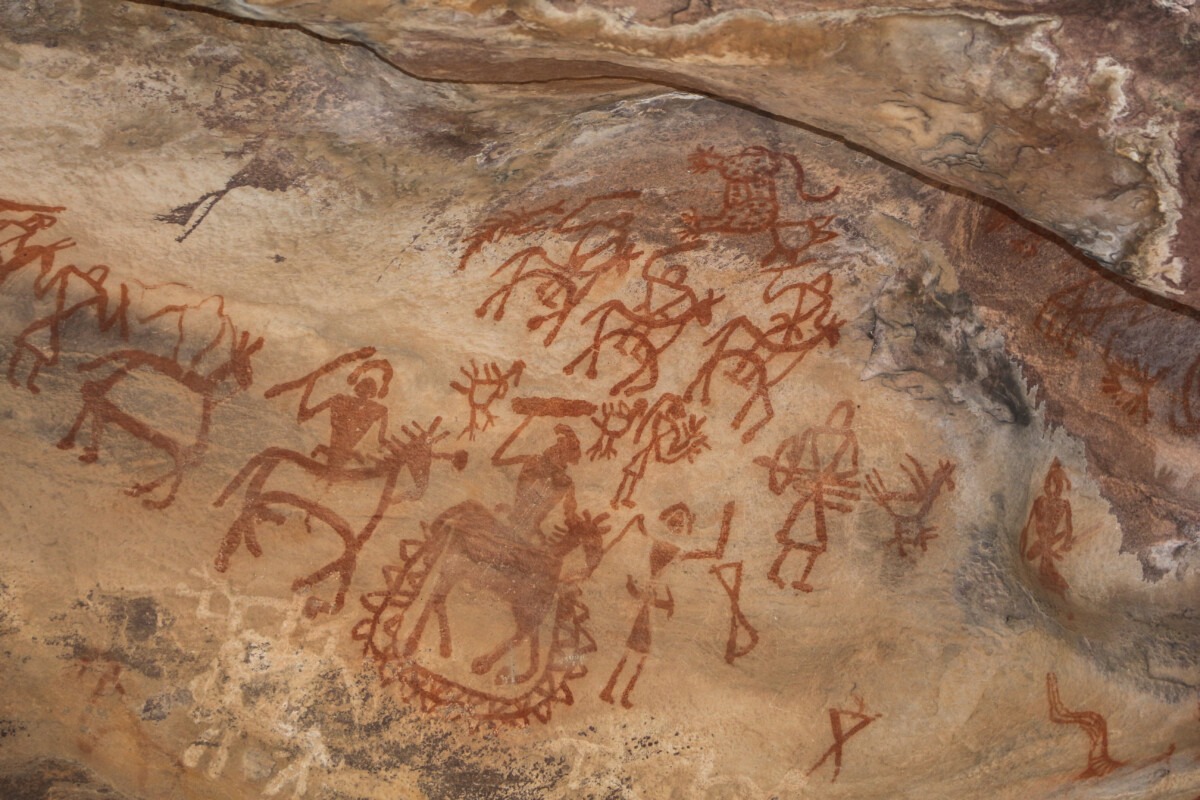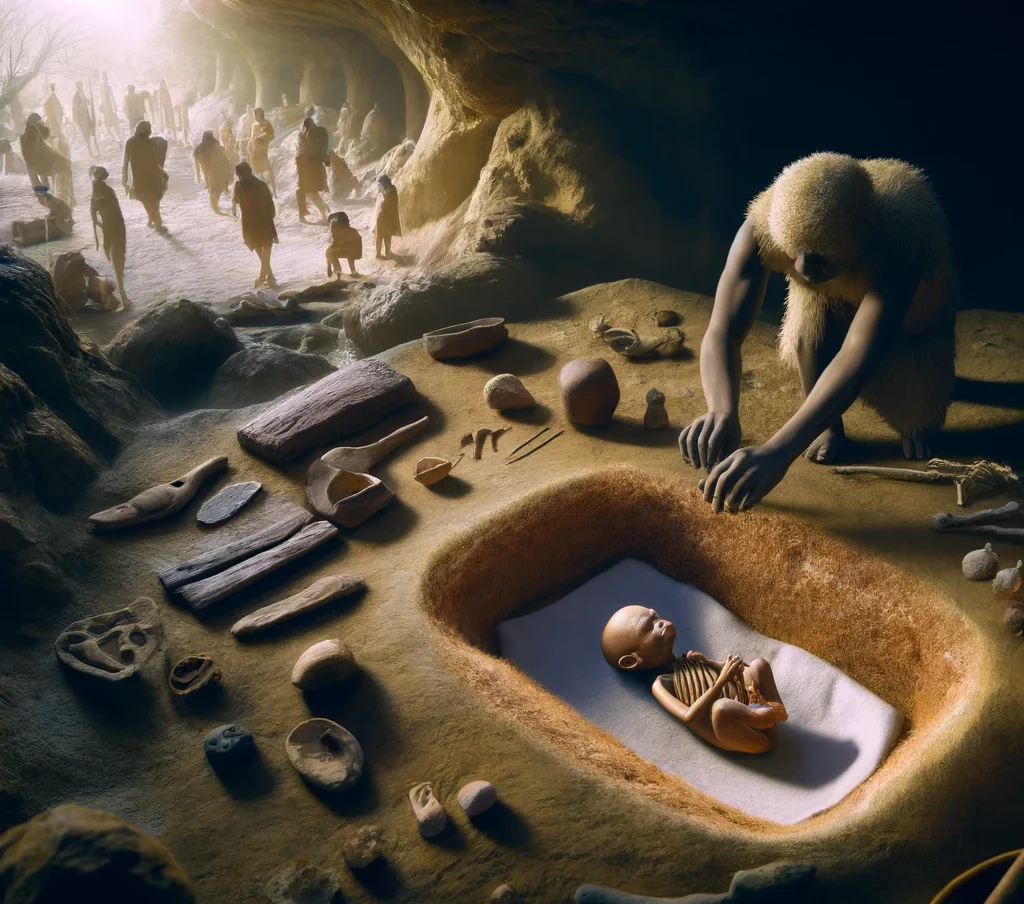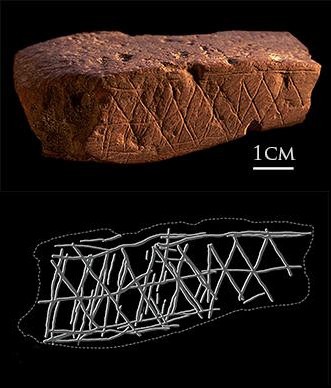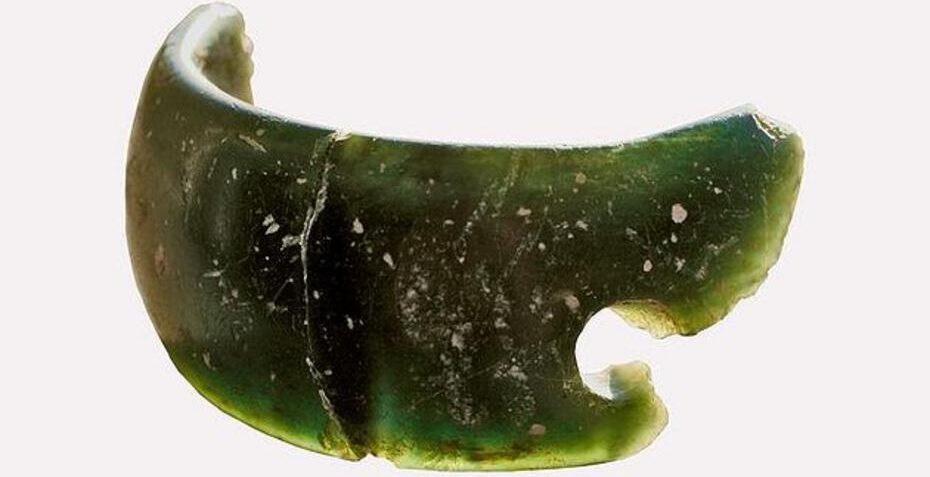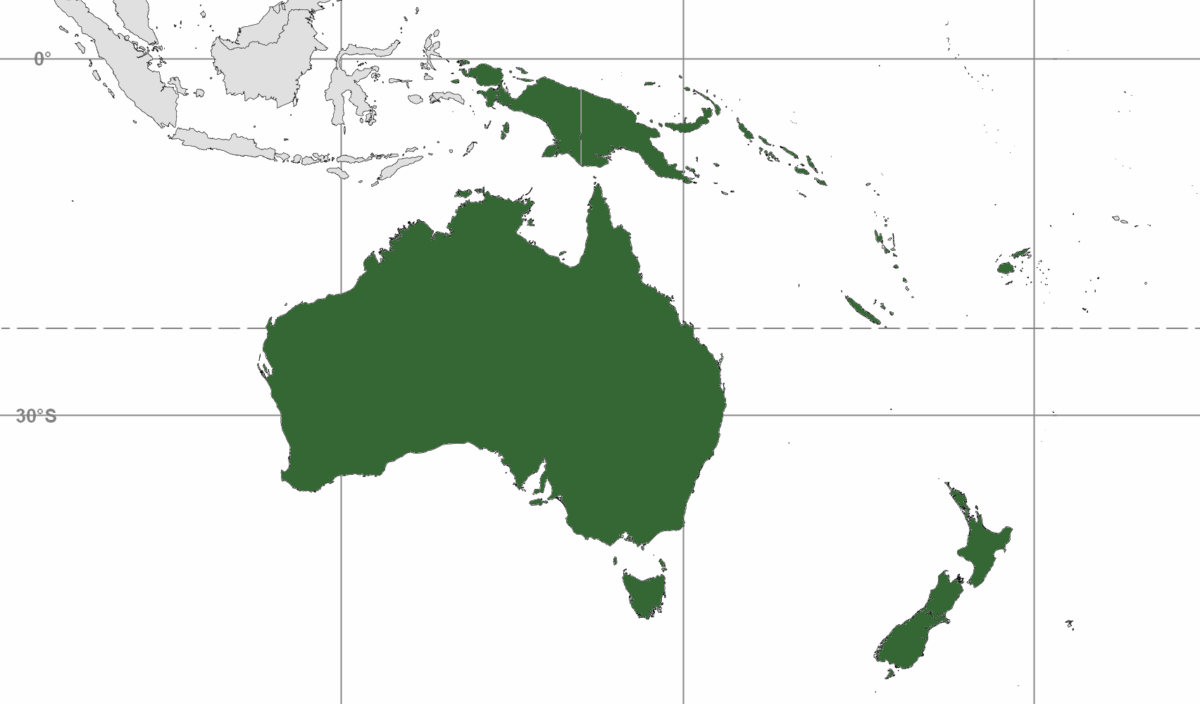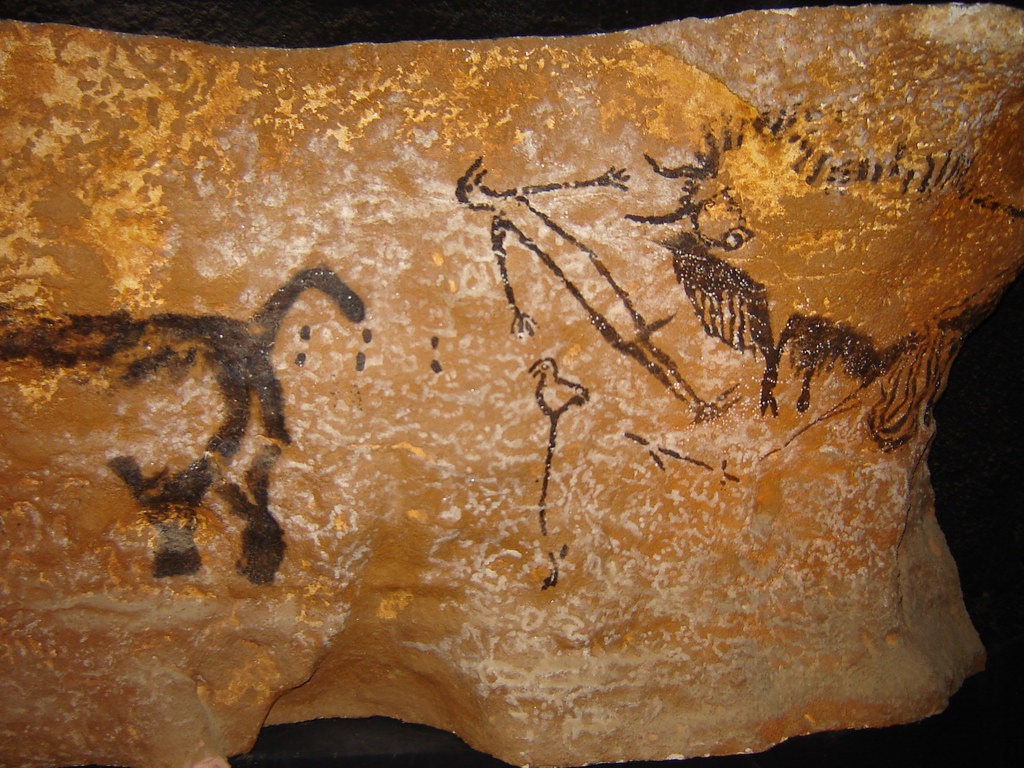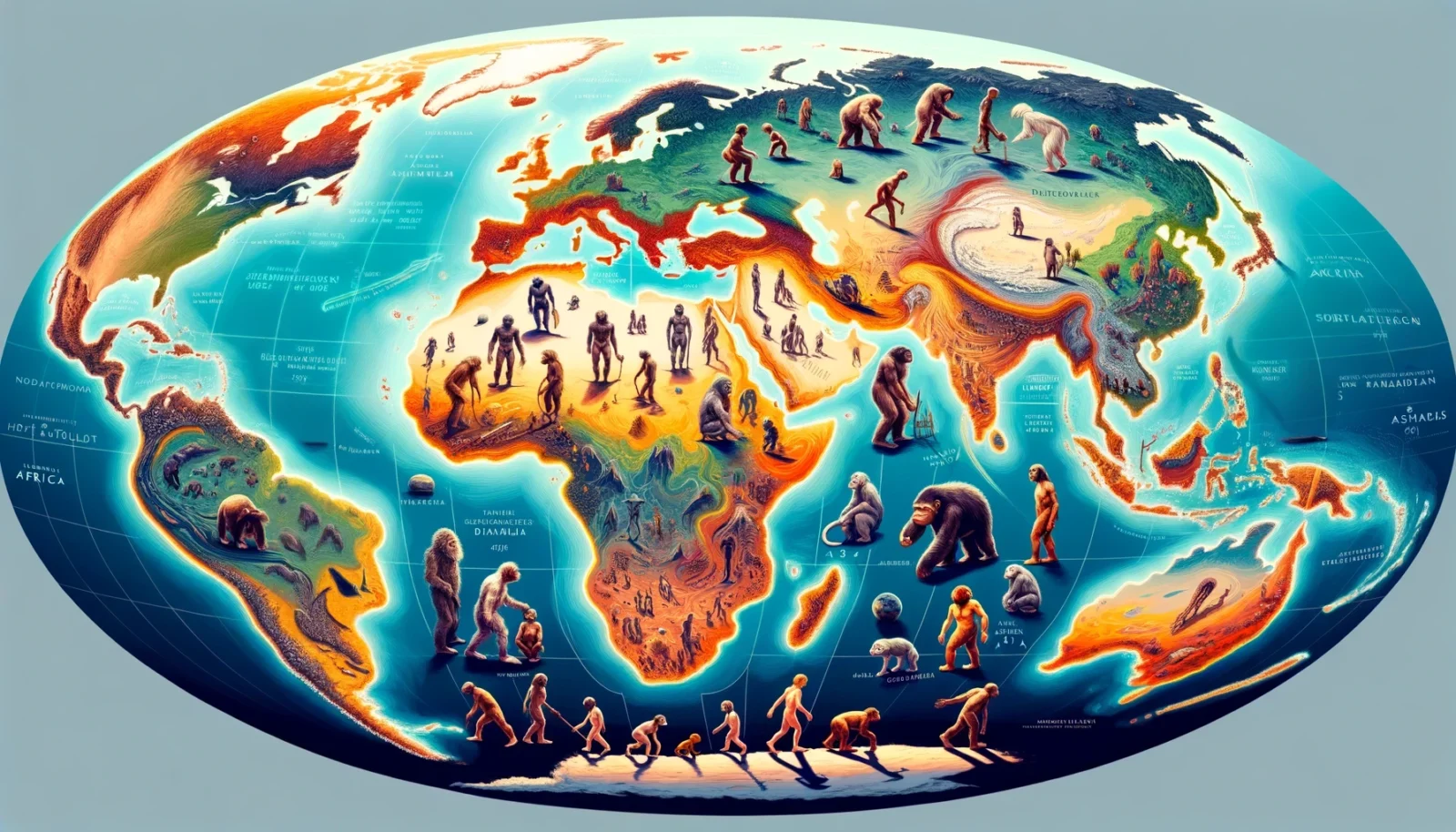World TL All > Prehistory > Ancient History > Medieval > Post-Medieval
Prehistory: From the earliest hominin artifact to 4004 BCE. The end of prehistory mostly maps to the invention of writing, but does overlap depending on region. For reference, I also included a few creation myth dates: Christian, Judaic, Zoroastrian, and Mayan with a hard end at 4004 BCE (the Christian creation date).
History, sliced into time periods, is yet another lens into humanity’s knowledge. These insights are the backbone to Mike‘s articles and his longer effort books. They are part of his lifelong commitment to study and represent his areas of focus. While they are not complete, they are useful.
The World History Timeline: Prehistory
The earliest known stone tools date back to at least 3.3 million years ago. They are identified by their purposeful flaking patterns, sharp edges, and location with other more identifiable artifacts or fossils. They are then verified with microscopic analysis confirming repetitive use.
Possible Stone-Tool Progression:
By 3.4 mya: Hammerstones, no modification, used for pounding seeds, nuts, or breaking bones.
By 3.3 mya: Lomekwi stone tools. Stone cores, rock flakes removed to reshape, narrow, or sharpen.
By 2.6 mya: Oldowan tools; first definite tools. Stone flakes with sharp edges would used for cutting meat, scraping hides, chopping plants, and wood whittling.
By 2.4 mya: Refinement of Oldowan tools, with more controlled flaking and sharper edges.
By 1.76 mya: Acheulean hand axes, iconic tools with a distinctive teardrop or oval shape for chopping wood, butchering animals, digging, and scraping.
By 1.76 mya: Larger cutting tools such as cleavers for butchering large animals, or heavy-duty scrapers for processing hides or wood.
By 500,000 ya: Middle Paleolithic tools, including pointed hand axes, side scrapers, knife-like tools, and awls for piercing.
By 300,000 ya: Diverse materials such as bone and antler start surviving the test of time. Earliest evidence of composite tools using multiple materials combined to produce tools with specific functions.
By 200,000 ya: Hafted tools, where stone tips are attached to wooden handles, significantly enhancing their effectiveness and range of use.
The Olduvai Gorge in Tanzania stands as a testament to early human ingenuity and foresight, illustrating a rudimentary form of organizational behavior that predates modern civilization. Utilized extensively over two million years, the site functioned akin to a “factory,” where early humans systematically crafted a variety of stone tools. They strategically selected specific locations that optimized their tool-making efforts. This specialization of space for specific activities suggests a significant cognitive leap—recognizing the efficiency of designated work areas. Such spatial organization reflects the emergence of complex thinking, where early humans not only made tools but also thought strategically about where to make them, hinting at the early development of proto-civilizational structures.
Analysis: Interestingly, remarkably few human remains have been directly associated with the primary tool-making areas. This separation implies that while the site was pivotal for tool production, other aspects of daily life, such as habitation and burial practices, occurred elsewhere. The diverse array of tools found at Olduvai, from simple Oldowan choppers to more advanced Acheulean hand axes, marks significant milestones in technological advancement. The absence of human remains, coupled with the diversity of artifacts, provides crucial insights into the early human capacity for planning, foresight, and possibly, social stratification.
By about 1.76 million BCE, early humans began to create hand axes. They would strike really large flakes, then continue to shape them around the edges. On the right, the hand axe pictured dates to circa 1.1 million BCE. It was found at Isampur, India.
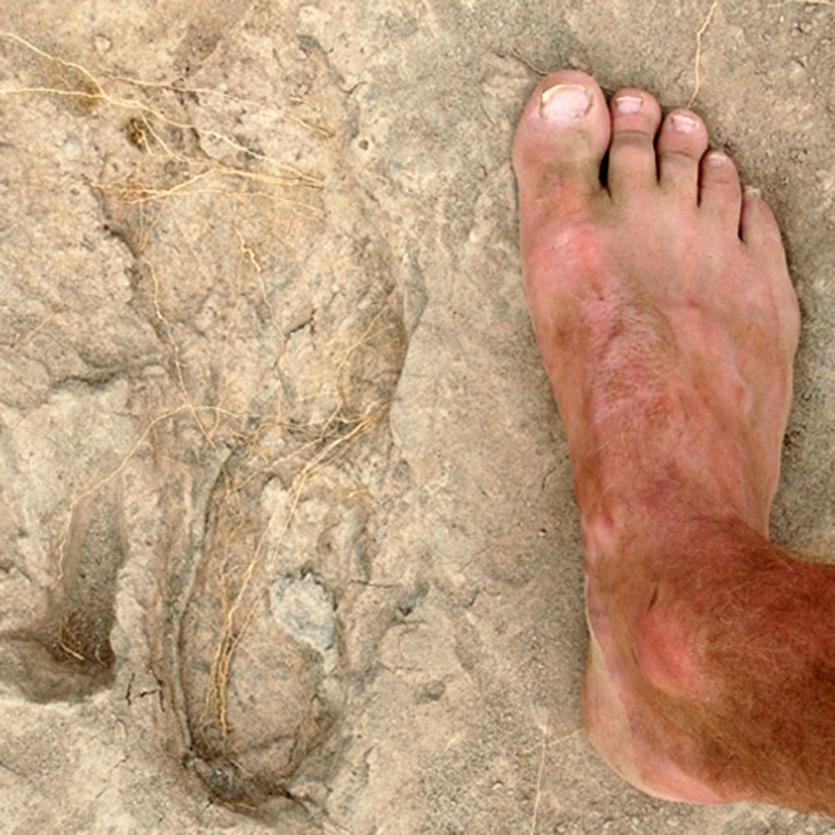




Species: Likely Homo erectus, our direct ancestor. The footprints found in Ileret, Kenya represent the oldest undisputed evidence of hominins walking upright in an efficient manner characteristic of modern humans. Our style of upright walking, which Homo erectus appears to have shared, is energy-efficient and adapted for long distances. It involves a long stride with a spring-like mechanism in the arch of the foot. These particular footprints demonstrate a well-developed arch and a long stride, culminating in a propulsive toe-off similar to us.
By this period, Homo erectus set a precedent for the locomotion seen in future hominin species, including Homo heidelbergensis, Neanderthals, Denisovans, and even the shorter Homo floresiensis.
Burned flint tools dated to circa 790,000 BCE were discovered at Gesher Benot Ya’aquov, Israel. Control of fire is one of the key traits of the genus Homo.
Earliest known seasonal settlement in the Asian zone: Nestled in what is now the outskirts of Beijing, China, the Zhoukoudian site stands as a testament to some of the earliest forms of semi-permanent human settlement in Asia. The presence of a long-standing fire pit at the center of the site is a significant indicator of repeated use, perhaps up to tens of thousands of years. Around this fire pit, early humans crafted stone tools, an essential skill for their survival and an activity that likely drew groups together.
Discovered in the 1990s, this 400,000-year-old Homo heidelbergensis structure in France is believed to be a primitive hut or shelter made from wooden posts and branches. The structure is thought to have been built by Homo heidelbergensis. The shelter is estimated to be around 4-5 meters (13-16 feet) wide and 6-7 meters (20-23 feet) long. It’s believed to have been constructed using a simple framework of wooden posts, with branches and leaves used to create a roof and walls. While the above image is a minimalist artist representation, the following is more likely what their camp looked like.

Homo heidelbergensis: Long spears made hunting large animals more safe. The oldest wooden spears found so far were found in Germany and dates to circa 400,000 BCE. In fact, they are currently the oldest known wooden artifacts. The find included 3 wooden spears, stone tools, and the butchered remains of more than 10 horses.
These spears have the same qualities as modern tournament javelins and can be thrown over 200 feet. The workmanlike qualities of the heavily worked wood were similar to modern javelins where the heaviest thickest part of the spear, the center of gravity, is in the front third.
When Homo sapiens first emerged, their population in Africa was likely just a few hundred thousand, while the total hominin population, including other species like Neanderthals and Homo heidelbergensis, may have ranged from 1.1 to 2.1 million. During this period, Homo sapiens were primarily found in Africa, while other hominins occupied broader ranges across Eurasia, with Neanderthals and Denisovans adapting to their environments with sophisticated tool-use and social structures. The early hominin distribution and interaction remain unclear, and this narrative, while speculative, helps us imagine the ancient world, highlighting the need for caution in interpreting these ancient population dynamics. Check out A New Look at Ancient Hominin Numbers: A Speculative Journey for more information.
Found in Morocco, this natural pebble with human-like features is possibly the oldest known example of a figurine or representation of the human form.
Found in central India, these cupules (circular hollows on rock surfaces) are among the earliest known forms of rock art. They were likely created by a species like Homo erectus or Homo heidelbergensis and not Homo sapiens. Homo sapiens are not known to be in India until around 40,000 years ago. Homo erectus is known in India as early as 1.7 million years ago and Homo heidelbergensis around 300,000 years ago. If Homo heidelbergensis is confirmed, that moves the evolution of symbolic thought back to before 700,000 years ago. If Homo erectus is confirmed, that moves it back to well before 2 million years ago.
Earliest known seasonal settlement in the Africa/Middle East zone: In the diverse and rich landscapes of what is now South Africa, the Klasies River Caves served as a vital seasonal haven for early modern humans.
Positioned strategically along the coast, these caves were revisited across generations, suggesting a shared understanding among different groups about the benefits of this location. The community constructed simple yet effective shelters from branches and animal hides just outside the cave entrances, creating a setup that supported daily activities such as tool crafting, hide preparation, and communal cooking over open fires.
This pattern of seasonal settlement allowed for the efficient exploitation of local resources, minimizing the need for constant movement and enabling a more sustainable living arrangement. It fostered not only survival but a thriving community life where knowledge, skills, and social bonds were developed and strengthened.
The archaeological remains and artifacts from the Klasies River Caves—ranging from sophisticated stone tools to evidence of hearths and human remains—illustrate a complex social structure that predates agricultural societies. These findings highlight the ability of early humans to adapt to their environment through cooperative behaviors and strategic planning, showcasing a level of communal life and environmental management that speaks to the enduring human spirit and intellectual vigor comparable to that of contemporary societies. This site provides a profound glimpse into one of humanity’s earliest known attempts at semi-permanent living, underscoring the sophisticated social dynamics that underpinned pre-agrarian human settlements.
Imagined Image: The image of the semi-nomadic people of South Africa depicts a group of up to 50 individuals congregating here around 100,000 years ago, establishing a semi-permanent settlement that utilized the natural shelter provided by the caves and the abundant resources of the surrounding area.
.
Circa 76,000 BCE someone in Africa, perhaps the child’s parents, carefully prepared a human child aged about three years old for burial. They dug a circular pit at the entrance to a cave (likely their cave), placed the child in the hole on his or her right side with knees drawn toward the chest.
After proper analysis of the surrounding soil and the decomposition that has taken place in the pit over the years, the archaeologists believe the child, now nicknamed Mtoto, was intentionally buried shortly after death.
Earliest known symbol use in the Africa/Middle East zone.
Located in South Africa, the cave contains engraved ochre pieces, which are among the earliest known forms of abstract art.
The Sentinelese are believed to have been isolated since the last major initial human migrations out of Africa 60 to 70 thousand years ago. Their isolation has likely preserved unique genetic traits. The Sentinelese are related to other indigenous peoples of the Andaman Islands, such as the Onge, Jarwa, and Great Andamanese. Studies on these groups indicate that they have some of the earliest genetic markers found in Asia. The genetic diversity among the Andamanese tribes, including the Sentinelese, is thought to be low due to their small population sizes and long-term isolation. Due to their isolation, the Sentinelese may lack immunity to common diseases found elsewhere–a significant concern.
Denisovan: This bracelet dates from 70,000 to 40,000 BCE. It was discovered inside the Denisova Cave beside ancient human remains. The Denisova Cave is a cave located in Siberia, Russia. Other cave finds include woolly mammoth and woolly rhino bones. Scientists say there is evidence that the bracelet’s maker used a drill. This is the earliest known example of advanced drilling in the world.
Head of the museum Irina Salnikova said: ‘The skills of its creator were perfect. Initially we thought that it was made by Neanderthals or modern humans, but it turned out that the master was Denisovan.” This has led to speculation that these earliest humans, Denisovans, were more technologically advanced than previously thought. If true, it might be that the Denisovans were more skilled than Homo sapiens and Neanderthals of the time.
Like Neanderthal DNA, Denisovan DNA exists in modern humans. Non-African East Asians and Europeans have about 2% Neanderthal DNA. Modern Melanesians derived about 5% of their DNA from Denisovans.

Long before the sails of European explorers dotted the horizon, the Australian continent witnessed the arrival of its first human inhabitants. Archaeological evidence, such as ancient tools and cave art, suggests that people arrived in Australia at least 65,000 years ago, marking one of the earliest known human migrations out of Africa. These first Australians, ancestors of today’s Aboriginal and Torres Strait Islander peoples, developed rich cultural traditions and adapted to the diverse environments of the continent, from its arid deserts to its lush coastlines. Their legacy is a testament to human resilience and ingenuity, shaping the land that would later be known as Australia for tens of thousands of years before European contact.
It’s clear: neanderthals created art. The discovery of cave paintings in Spain, dated to over 64,000 years ago, marked a profound shift in our understanding of Neanderthals. Found in sites such as La Pasiega, Maltravieso, and Ardales, these artworks — comprising abstract symbols, geometric patterns, and hand stencils — are attributed to Neanderthals, predating the arrival of Homo sapiens in Europe. This corrected the longstanding perception that Neanderthals lacked symbolic thought and artistic expression.
The presence of these ancient artworks, along with evidence of personal ornaments like decorated shells, suggests that Neanderthals engaged in behaviors once thought exclusive to modern humans. This includes the creation of art and the use of symbolic communication, indicating a level of cognitive sophistication and cultural complexity previously unrecognized. These findings not only expand our understanding of Neanderthal capabilities but also blur the lines between them and our own ancestors, highlighting a shared capacity for creativity and symbolic thinking in the human lineage.
Cognitive Revolution
50,000 BCE – 70,000 BCE. Population range: 500,000 to 2.5 million.
Given the uncertainties and lack of direct data, the following are speculative estimates.
- Africa-Middle East: 50-60% or 600,000 to 1 million people
Africa, being the origin of modern humans, likely had the highest population density at this time, particularly in Sub-Saharan regions which were more conducive to human habitation due to their climate and available resources. - Asia: 40% or 200,000 to 400,000 people
- Europe-Mediterranean: 10% or 50,000 to 100,000 people
- The Americas: 0.
- Oceana-Australasia: 1% or 10,000 to 15,000 people
The initial colonization of Australia around 50,000 BCE by modern humans involved small, isolated groups who managed to navigate sea crossings, leading to a very low initial population density. The rest of the remote islands of Oceania were among the last to be reached by humans.
A Shared Earth! Neanderthals-Hobbits-Flourensis
Around this time, Homo sapiens shared the Earth with other hominin species. Neanderthals were still widespread in Europe and parts of western Asia. In Asia, particularly on the islands of Indonesia, Homo floresiensis, often referred to as the “Hobbit” due to their diminutive stature, survived until about 50,000 years ago. Additionally, Denisovans, a less visually documented but genetically distinct group, also roamed Eurasia, leaving behind a genetic legacy that persists in modern humans, particularly among populations in Melanesia.
The sea offers tremendous resources and stability. The rising and receding oceans continue to destroy the homes of many. How many unknown cultures in our vast history thrived on the coast for millennia?
The site discovered off the coast of Cuba, also known as the “Cuban Underwater Pyramids,” includes pyramid-like structures and other geometric formations identified using sonar and underwater robots by the research team led by Paulina Zelitsky and Paul Weinzweig. This site, submerged at a depth of around 650 meters, has sparked debate and speculation about its origins, with some suggesting it could be remnants of an ancient civilization dating back more than 50,000 years, while others argue it might be a natural geological formation. Further research is needed to uncover the true nature of these intriguing structures.
Next >>
World TL All > Prehistory > Ancient History > Medieval > Post-Medieval




